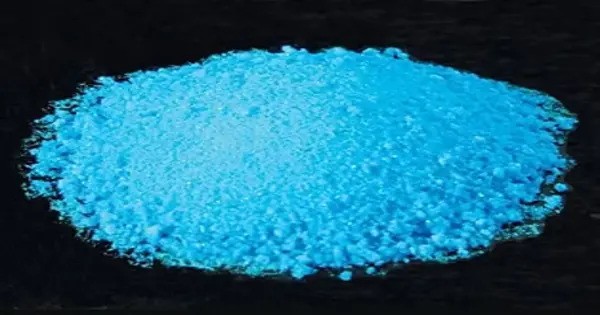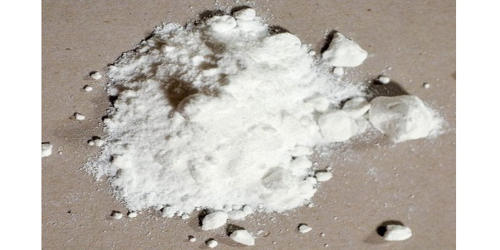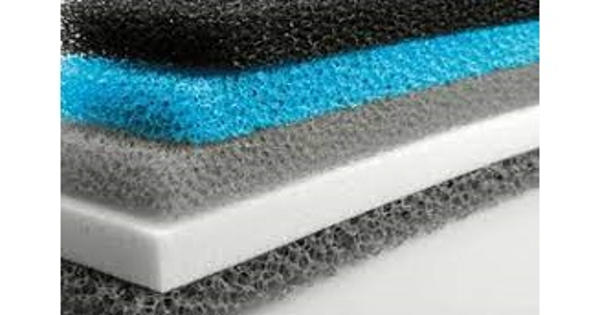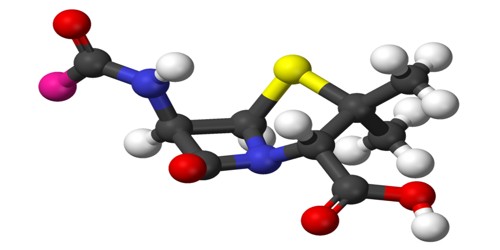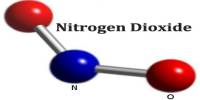Copper salicylate describes a range of compounds containing copper(II) and salicylate. Many compounds are known. It is a group of compounds combining copper(II) with salicylic acid, often appearing as blue crystals. They are generally blue. Known for its anti-inflammatory and analgesic properties, it’s been studied for treating rheumatoid arthritis and osteoarthritis, showing stronger effects than cortisone without typical side effects like gastrointestinal issues.
Simple species include:
Cu(O2C6H4OH)2(H2O)2·H2O.
Cu2(2O2C6H4OH)4(H2O)2·L) (L = diverse solvent.
Many adducts of copper(II) salicylates are known with amines and N-hetrerocyclic ligands.
Research highlights its potential as an anticancer agent, particularly in copper(II) complexes with phenanthroline, which induce apoptosis in cancer cells, including triple-negative breast cancer, by targeting anti-apoptotic proteins. It also exhibits superoxide dismutase-like activity, aiding in oxidative stress management.
Properties
- Appearance: Typically blue or sky-blue fine-needled crystals, though it can form a green tarry phase or ochre powder under certain conditions (e.g., heating or milling).en.wikipedia.orgskylighter.com
- Solubility: Copper salicylate is generally insoluble in water, making it precipitate readily in aqueous solutions, which is useful in synthesis. It exhibits non-aqueous solubility, suitable for applications like solar energy or water treatment.americanelements.comskylighter.com
- Stability and Isomers: At room temperature, it may exist in multiple stable isomers (e.g., sky-blue crystals, green tar, or ochre powder). Heating (e.g., to 225°F) or milling can cause phase transitions, such as turning green or ochre, though these changes may not affect performance in some applications.
Natural and Synthetic Occurrence
Copper salicylate is not commonly found in nature but is synthesized from copper(II) salts (e.g., copper chloride or sulfate) and salicylic acid or its sodium salt. Synthesis often involves reacting copper(II) chloride with sodium salicylate in cold aqueous solutions to yield sky-blue crystals, with careful washing to remove sodium chloride byproducts.
It can be produced in various forms, including monobasic copper salicylate (Cu(C6H4(OH)COO)·H2O), used in research and commercial applications.
Applications
Copper salicylate is used in non-aqueous applications like solar energy and water treatment, and as a pigment or antifungal agent. It’s generally safe in small doses (up to 10 mg daily), but high doses can cause toxicity, including nausea or kidney issues. Preparation involves reacting copper salts with sodium salicylate, often yielding sky-blue crystals that must be kept cool to avoid isomerization into less desirable forms.
Pharmaceuticals: Investigated for anti-inflammatory, analgesic, and anticancer properties. Its copper(II) complexes are studied for potential chemotherapeutic use due to their DNA interaction and cytotoxicity.pubs.acs.orgsciencedirect.compubmed.
- Industrial Uses: Employed in non-aqueous applications like solar energy and water treatment due to its organometallic properties.americanelements.
- Pyrotechnics: Used in blue rocket whistle mixes, where its sky-blue crystalline form is preferred for aesthetic and performance reasons. The compound must be kept cold during synthesis to avoid forming the less desirable green tar phase.
- Dermatology and Fungicides: Applied in dermatological treatments and as a fungicidal composition due to its biologically active properties.
